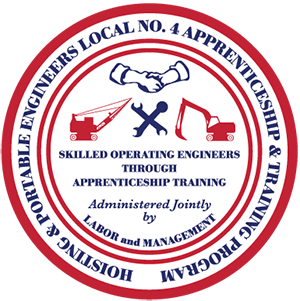Brothers and Sisters,
I’d like to congratulate Business Manager Bill McLaughlin on his retirement announcement and say thank you for his leadership and generosity with the veteran community and to the Helmets to Hardhats organization. I’d also like to congratulate Mike Bowes on becoming the new Business Manager of Local 4, as well as to Dave Shea as President and Chris Carey as Vice President, and James Marenghi as the Worcester Agent of Local 4. Congratulations to all on this great leadership team!
This month’s safety corner discusses some aspects of demolition safety, which can be an inherently dangerous business for the members of Local 4. Demolition is the dismantling, razing, destroying, or wrecking of any building or structure, or any part thereof. Demolition work involves many of the hazards associated with construction; therefore, all of the 29CFR1926 Construction Standards apply to a demolition site. However, demolition involves additional hazards due to the unknown hazards, which makes demolition work particularly dangerous. For this reason, OSHA created Subpart T – Demolition standards.
To combat these additional hazards, everyone at a demolition worksite must be fully aware of the hazards they may encounter and the safety precautions they must take to protect themselves. This can be accomplished when employers and employees are following these three tasks:
PROVIDE the right protection and equipment
TRAIN all employees about the hazards and how to use the equipment safely
One of the most common demolition job citations issued by OSHA was for failure to conduct an Engineering Survey to determine the condition of the structure prior to demolition. This includes determining whether an unplanned collapse of the building or any adjacent structure would injure those working in the vicinity. The person or persons in charge of demolition and cleanup must adequately prepare for the task with regard to the health and safety of the workers. Check out the QR code below to see the most common demolition citations.
“Demolition workers face many hazards and their lives should not be sacrificed because of deliberate neglect of demolition fundamentals,” said Assistant Secretary of Labor for Occupational Safety and Health Dr. David Michaels.
- Mechanical equipment shall not be used on floors or working surfaces unless such floors or surfaces are of sufficient strength to support the imposed load.
- Floor openings shall have curbs or stop-logs to prevent equipment from running over the edge.
- Cranes, derricks, and other mechanical equipment: Employers must meet the
- requirements specified in subparts N, O, and CC of this part.
If you want to share information with OSHA about demolition safety such as best practices, permitting requirements, or safer work methods, you can send your email to oshademolition@dol.gov.
- Boston North Area Office – Andover Shattuck Office Center 138 River Road, Suite 102 Andover, MA 01810 (978) 837-4460 (978) 837-4455
- Boston South Area Office – Braintree 639 Granite Street, Floor 1 Braintree, MA 02184 (617) 565-6924 (617) 565-6923
- Springfield Area Office – Springfield 1441 Main Street, Room 550 Springfield, MA 01103-1493 (413) 785-0123 (413) 785-0136
I hope you all have a SAFE and busy summer season.
